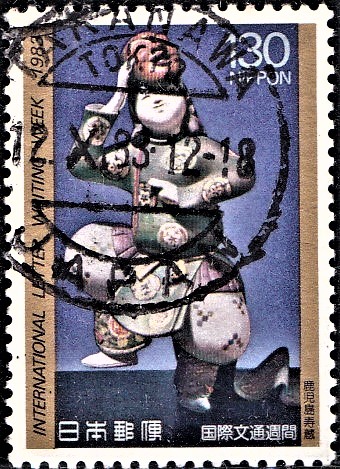
India Post : Letter Box
A Miniature Sheet consisting of 4 nos of postage stamps on 150 years of the Indian Post :




 Issued by India
Issued by India
Issued on Oct 18, 2005
Issued for : In the sesquicentennial year, the Department of Posts is proud to issue a set of four commemorative postage stamps depicting the Victorian Letter Box, the Penfold Letter Box, the Cylindrical Letter Box and the TV type box, respectively.
Credits :
Stamp & FDC : Shankha Samanta
Cancellation : Alka Sharma
Type : Miniature Sheet, Mint Condition
Colour : Multicolour
Denomination : 500 Paisa each
Stamps Printed : 0.8 Million each
Miniature Sheets : 0.2 Million
Printing Process : Photogravure
Printer : India Security Press, Nashik
About :
- The ubiquitous letter box is perhaps the best symbol of the outreach of the postal service in the remotest corners of India. Unassuming, yet instantly recognizable, the letter box has been part and parcel of our everyday lives, an icon of stability in an ever-changing world. The Letter Box has witnessed the phases of change and evolution of postal services in our country as well as in the rest of the world, and has itself undergone several incarnations.
- Historically they have been of different shapes and sizes, combining functionally while also representing the authority of the state and its prerogative of being the sole provider of postal service in the country.
- The genesis of the present day Letter Box lies in ‘Stone Post’. From the seventeenth century onwards Dutch and English ships made long voyages around the Cape of Good Hope. When they stopped for fresh water at the Cape, they would leave their letters under a big stone, from where they were collected by the next ship going in the opposite direction.
- It is said that France was the first country to introduce roadside Letter Boxes as early as in 1653, followed by Germany and Belgium.
- In Britain, Rowland Hill first suggested installation of the roadside Letter Box in 1840. However, the first Letter Box in the British Isles came to be set up only in 1852, when pillar boxes were erected at St. Hellier in Jersey on the recommendation of Anthony Trollope, who was working as a Surveyor’s Clerk for the Post Office.
- In 1853 the first pillar box on the British mainland was erected at Botchergate, Carlise. These letter boxes were called Victorian Boxes. In 1859 the design was improved by moving the aperture from the top to below the rim, and this became the first standard national pillar box. Green was adopted as the standard colour for the early Victorian boxes.
- The Victorian Crown type was the first Letter Box imported to India in 1856-57. This was followed by the Lotus type Letter Box, also known as the Penfold Letter Box, after its designer. Between 1866 and 1879 the hexagonal Penfold box with a cap decorated with acanthus leaves became the standard design for pillar boxes, and it was during this period that red became adopted as the standard colour.
- In 1879 a cylindrical design of pillar box was adopted universally, in India and other countries of the world. From 1887 the words POST OFFICE were also placed on either side of the aperture. Later, the hours of collection also came to be indicated on the letter boxes.
- From 1857 onwards the wall box-type letter boxes came into use, for fixing onto existing walls. Small lamp-post boxes also came to be introduced in 1896.
- Thus, over the years, the design of the letter box has undergone a series of changes, adapting to different needs and climatic conditions also. But installation of a letter box remains a matter of great convenience and pride.
- At present two types of letter boxes, the TY type and the Pillar type are used by the Department of Posts in India. To facilitate differentiation of mail at the very initial stage, and moreover, to establish the distinct identity and treatment given to the different mail segments, certain colour variants of letter boxes were also introduced. The green letter box was for collecting local letters, i.e. within the same town, while the blue letter box was front end of the metro channel, serving metros. Yellow letter boxes depicting Rajdhani Channel were erected as collection points for letter destined for Delhi from all over the country.
- Text : ‘Milepost’ published by West Bengal Circle, and from websites.
Subscribe
Login
0 Comments
Oldest







